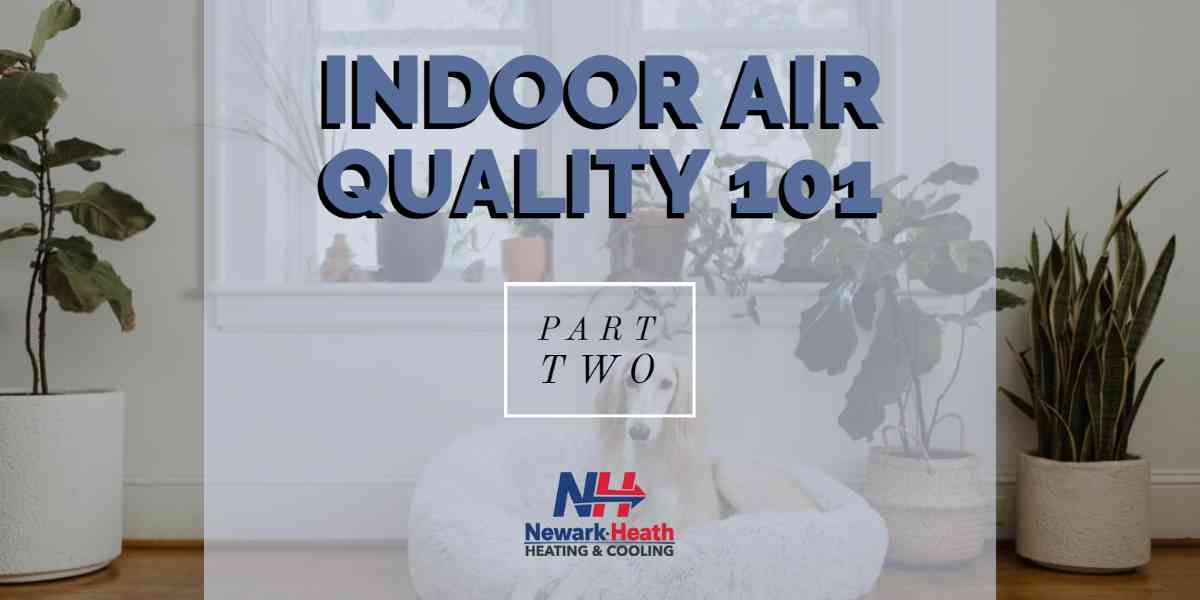In the first part of this four-part series, we discussed why your Indoor Air Quality is important. We also illustrated how this importance is especially relevant in today’s society because most Americans spend roughly 90 percent of their time indoors. Although people tend to associate pollution as being a problem mainly in big cities, health officials explain that this is a widespread misunderstanding: The air in our homes and places of work is actually up two to five times more polluted than the air outside, even the largest U.S. cities with the most industry.
Now in our second part, we cover a list of indoor air pollution types common in the U.S.
Although household and workplace air pollution isn’t necessarily new (studies show it’s improved in recent years) the general public still fails to realize how serious of a health risk it poses; these airborne toxins can cause health problems that impact your mood, influence your well-being, brain function, and levels of energy.
Indoor air pollution is most devastating in low income areas, according to the World Health Organization, where the risk levels are at their worst.
Origins of Indoor Air Pollution
The air pollution floating around within our places of work and our homes can be likened to an invisible nemesis; typically it is undetectable to the naked eye. Unless it’s a cloud of dust or some sort of smoke (for example), air pollution particles aren’t visible because they’re microscopic. A wealth of scientific research on the matter lists a diverse range of indoor air contaminants; this list includes the following:
- Smoke from wood-burning stoves, fireplaces and candles
- Pesticides and other toxic chemicals
- Smoke from cigarettes, tobacco
- Carbon monoxide, radon and other dangerous gases
- Volatile Organic Compounds
- By-products of fuel-burning appliances
- Asbestos and other waste from degraded insulation
- Dust mite waste and other dust particles
- Waste particles coming off of animals, like pet dander, fur and dead skin
- Outdoor air pollution coming into a home or building
- Construction materials and furnishings from home renovations and repairs
- Spray products or solvents for household cleaning and maintenance
- Mold and mildew
- Aerosol and other waste
- Waste from products used for hobbies or personal care
- Pollens grasses, and grains
- Fumes from cooking and food particles
Indoor Air Pollution Should Be Taken Seriously
Many of the tiny microscopic air pollution particles sailing around in the air in our homes are transported indoors via foot traffic coming in and out — by ourselves, our pets and our visitors. Such is why we suggest having everyone take off their shoes upon entering. After these particles get inside, they settle onto our carpets or rugs or other kinds of flooring; similarly, they can get lodged into our furniture or settle on certain appliances. Once inside, it’s a matter of time until many of these particles become airborne and, as such, breathable. If your house doesn’t have decent ventilation or suitable air filtration, a lot of these airborne particles can cause certain symptoms, or in some cases even health issues. It is not unheard of for a source of indoor air pollution to already be a problem that doesn’t get identified right away.
As such, some symptoms show up instantly. Others take time to manifest and become apparent. Because it might take years for an air pollution problem to become obvious, sometimes they aren’t found until it’s too late.
Several factors affect the various ways in which indoor air pollution can impact your health. These are things like whether you are healthy or not and the specific types of pollution that might be relevant and their level of concentration. In any situation, however, the advantages of making sure your home has enough ventilation and proper air filtration are well worth it; in some of the cases of the more grave variety, sustaining healthy indoor air quality has saved lives.
How Does Household Air Pollution Affect Me?
If you have indoor air pollution, you might have immediate symptoms. These are short-term symptoms and include health effects like throat irritation or soreness, coughing, sneezing, trouble breathing. Or it could cause irritation in your eyes, nose and nostrils. It can also manifest as irritation of the skin. You could experience tiredness or fatigue and/or dizzy spells and/or migraines or headaches. If you are dealing with any of these symptoms, it doesn’t automatically mean you have an indoor air quality situation. Nonetheless, it’s always smart to play it safe and track down the source; it’s entirely possible you have some sort of pollution floating around in your home. If you do, you probably want to investigate the matter. Furthermore, if you are struggling with asthma or allergy symptoms (another sign of air pollution) that recently surfaced or have been a problem and have gotten worse, take charge of your health and well being. Indoor air quality is more important than most people think!
How Serious is Indoor Air Pollution?
Now we explore the darker side of the Indoor Air Quality issue. The more severe implications of indoor air pollution problems can result in long-term health effects that might take several months, even years, to become obvious; these typically take root after continuous or constant exposures over a longer period and duration of time. If this is happening, some of the more common contaminants we listed above can create chronic, long-lasting health conditions that might alarm you to learn about. Among these more long-term ramifications are diseases of the heart and/or lungs. In certain cases, some of these sources of indoor air pollution can lead to the development of cancer or even result in death. On the flip side, there are some types of gases like carbon monoxide for one, it won’t even take much exposure time; the most serious sources can cause death in a matter of hours. Because of this, and because of the more serious long-term health conditions arising in homes across the nation, government officials are working to continue to raise awareness. As we mentioned earlier: Most of us here in the United States are indoors the vast majority of the time.
Ensure Your Indoor Air Quality Today and Take Charge of Your Health and Safety!
Here at Newark-Heath Heating & Cooling, we strive to give our customers a Five Star HVAC experience every time, and work hard to ensure everyone stays comfortable rear-round, during Ohio’s hottest and coldest months. Nevertheless, we believe your health and safety is even more important. Not only that, but we are talking also about the health, safety and wellbeing of everyone in your home, your friends and your family. Although this information, which is being reported by the EPA and other government entities, might seem extreme, the only reason we are reporting it is to promote awareness so you can make better choices when it comes to your Indoor Air Quality. Those better choices can only begin with proper testing to diagnose and remove potential sources of pollution floating around in your home, in the air you and your loved ones are breathing. If you are interested in having the quality of air in your home tested for these deadly toxins by a certified professional, or if you’d like to purchase any one of our air quality products or services, please reach out to us today at 740-212-5849, or click here to set up an appointment now.
We look forward to hearing from you, and putting your mind at ease so you can breathe easier with peace of mind in knowing your home is safe and your air is clean!
Indoor Air Quality 101: Part 1






